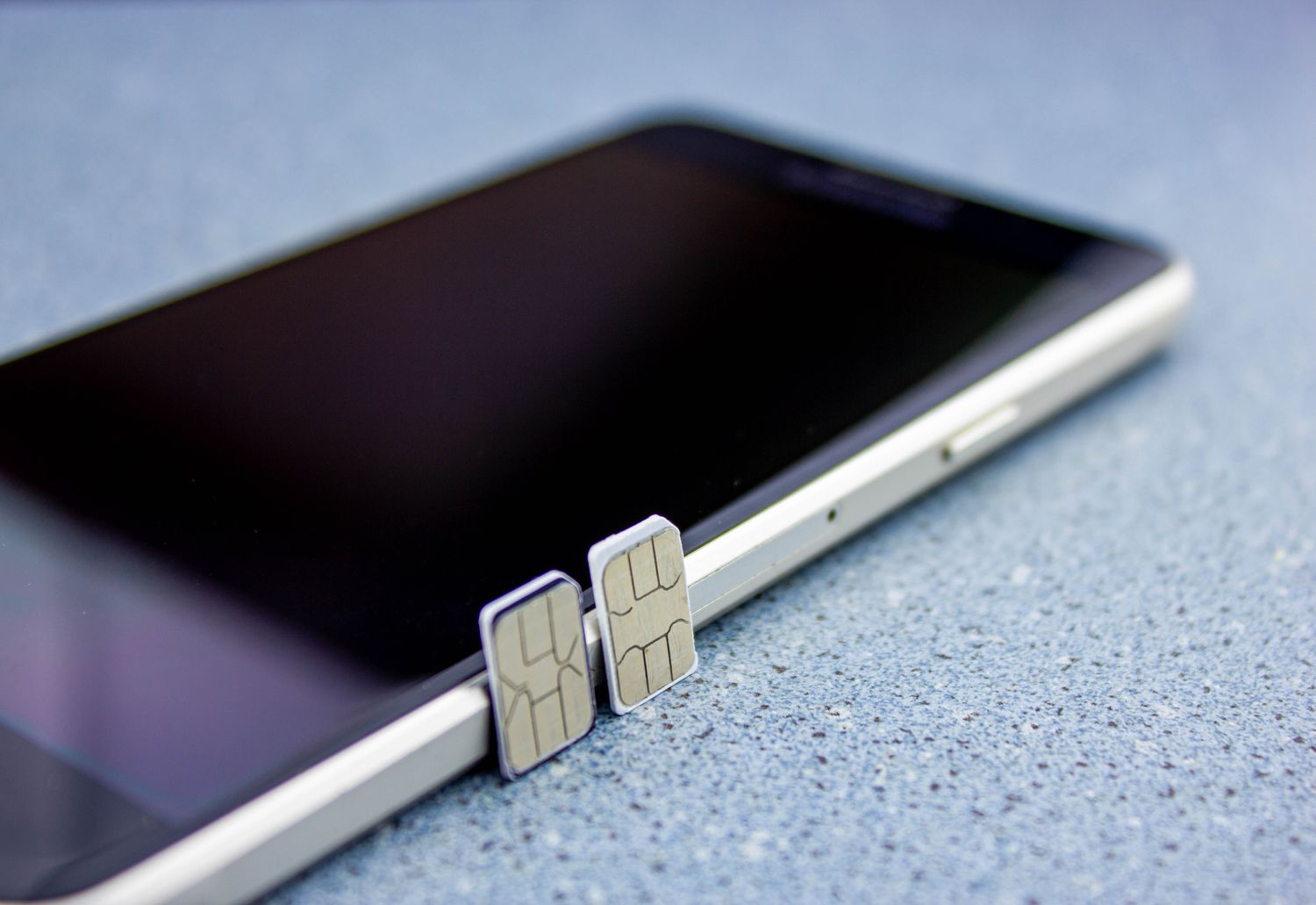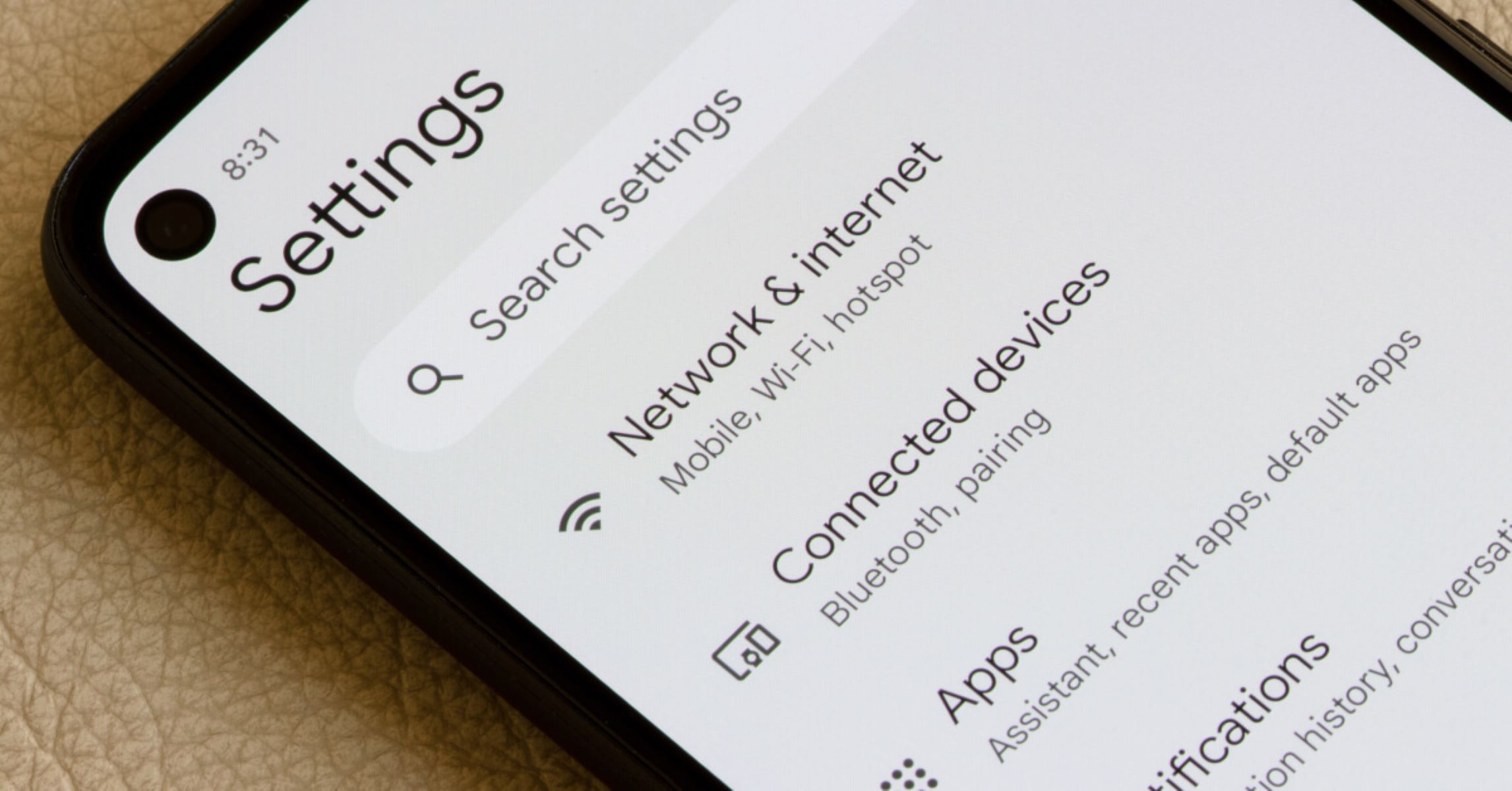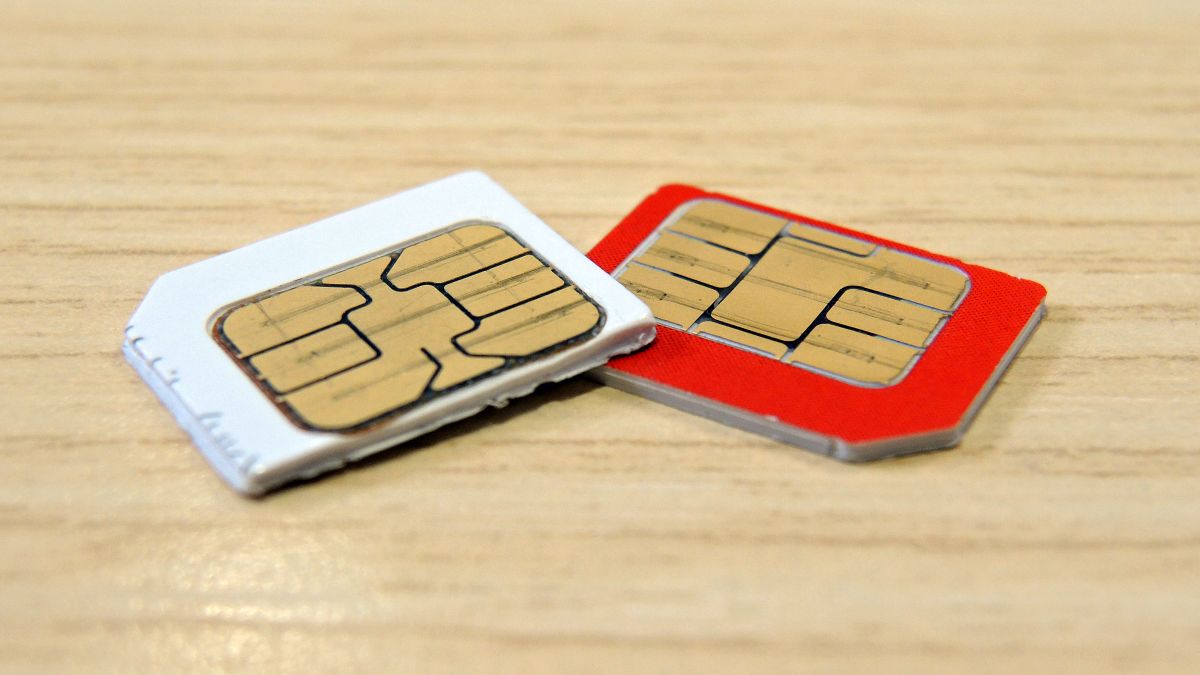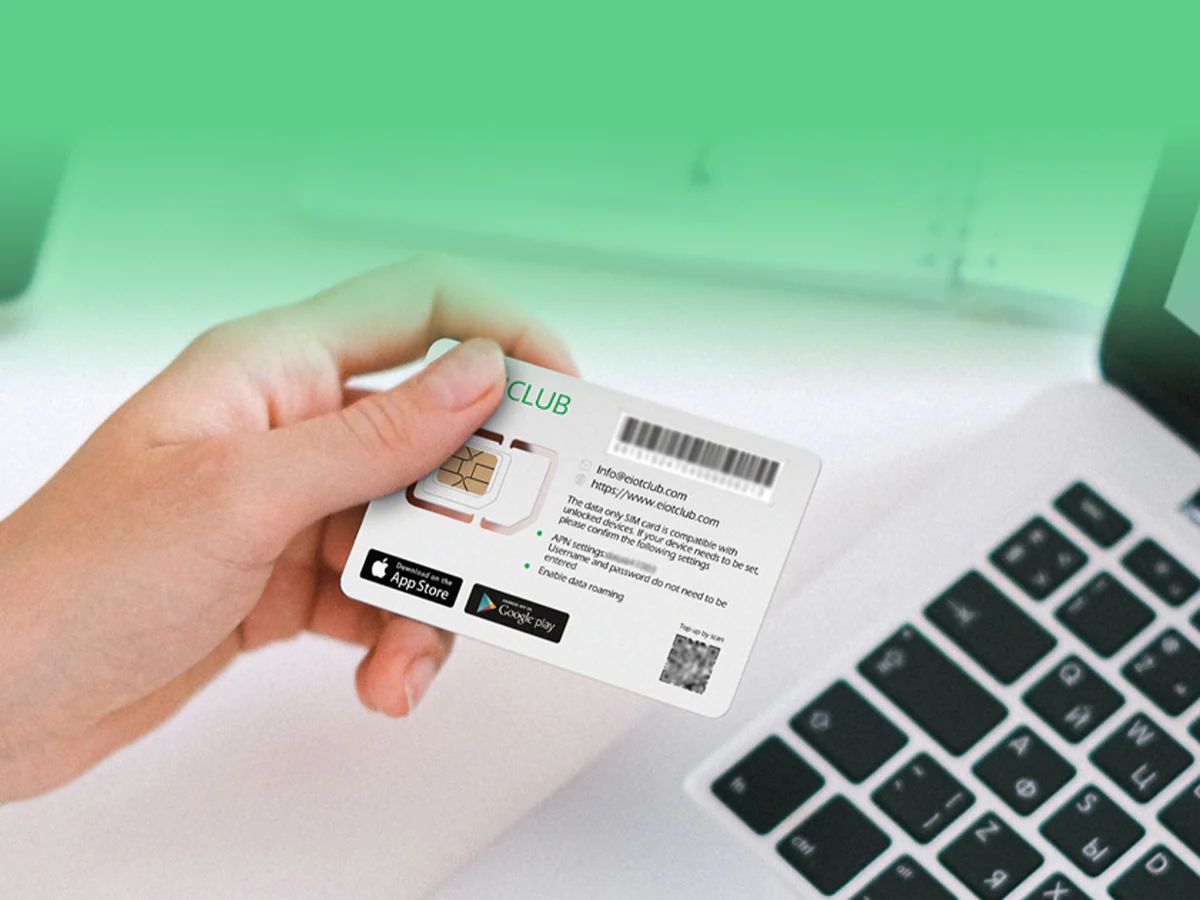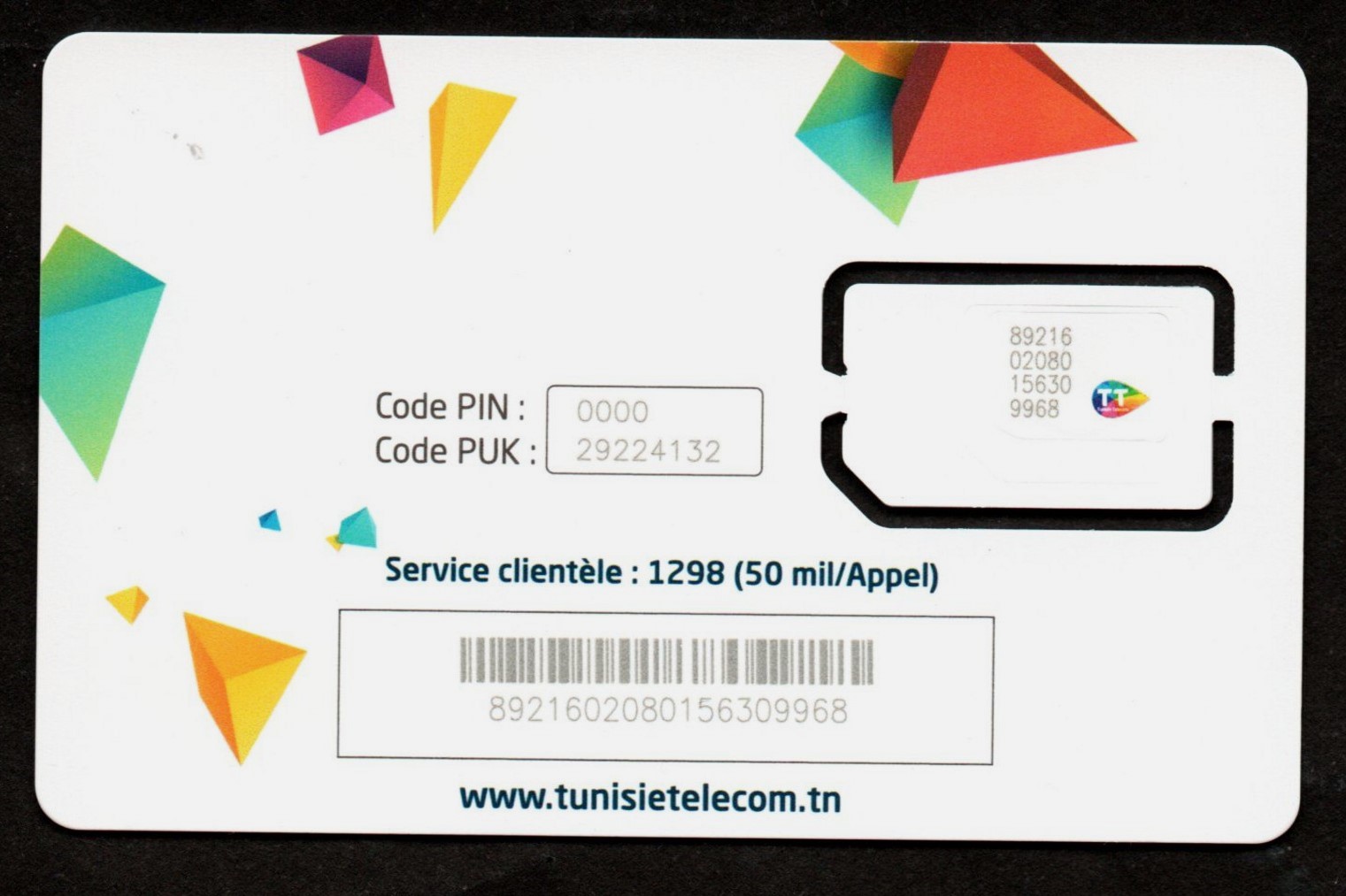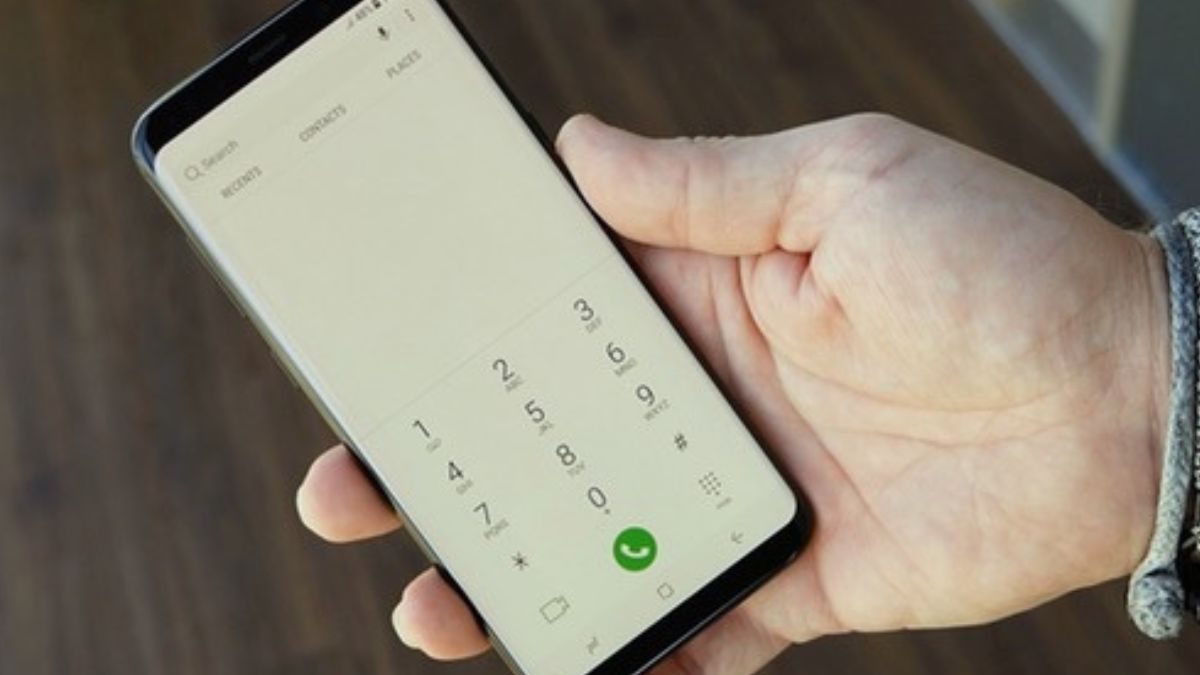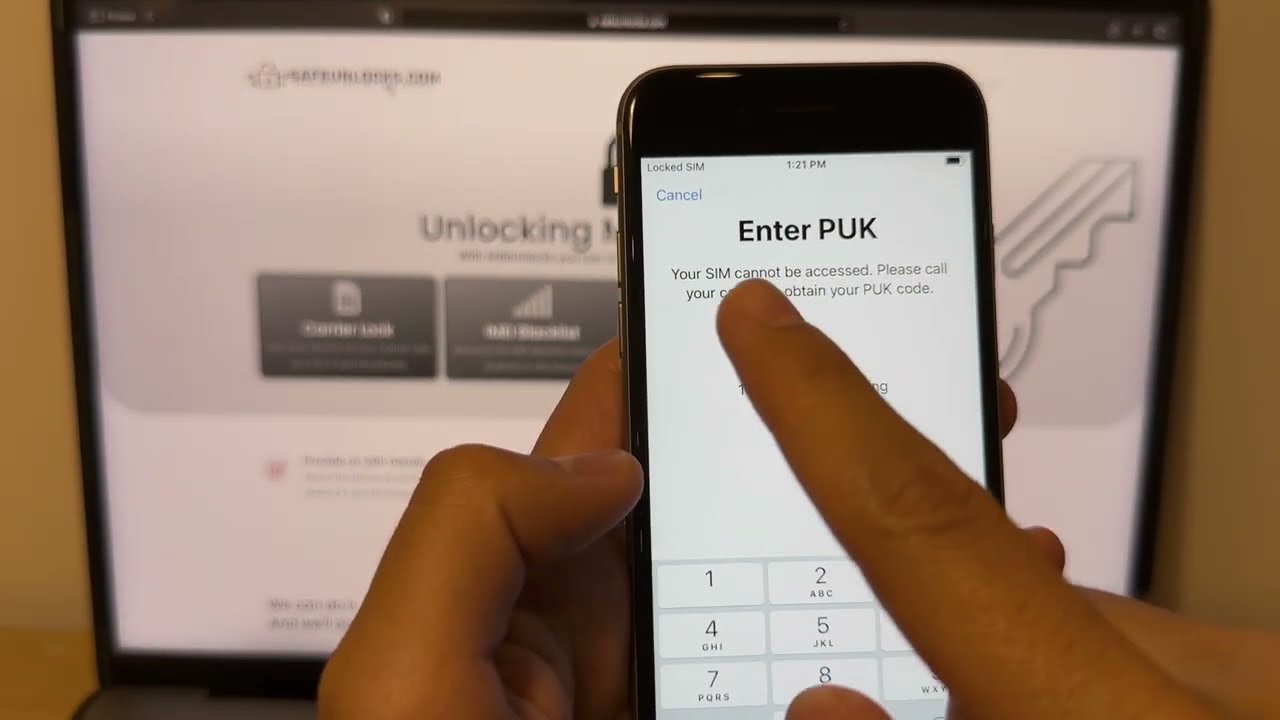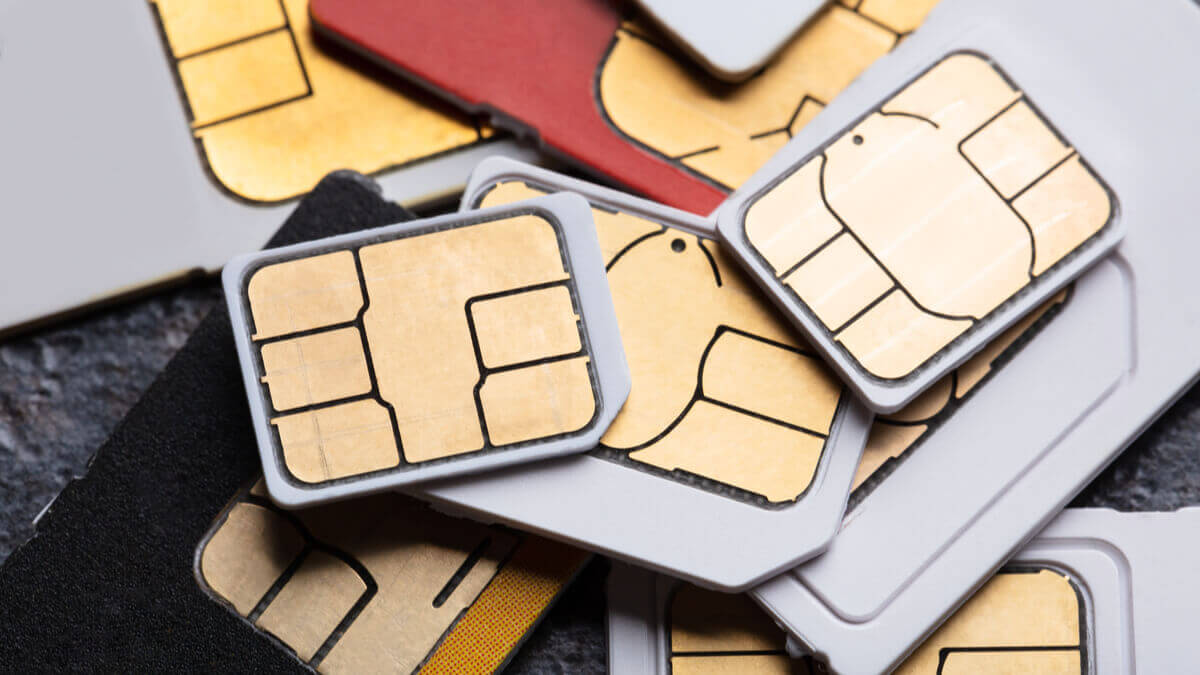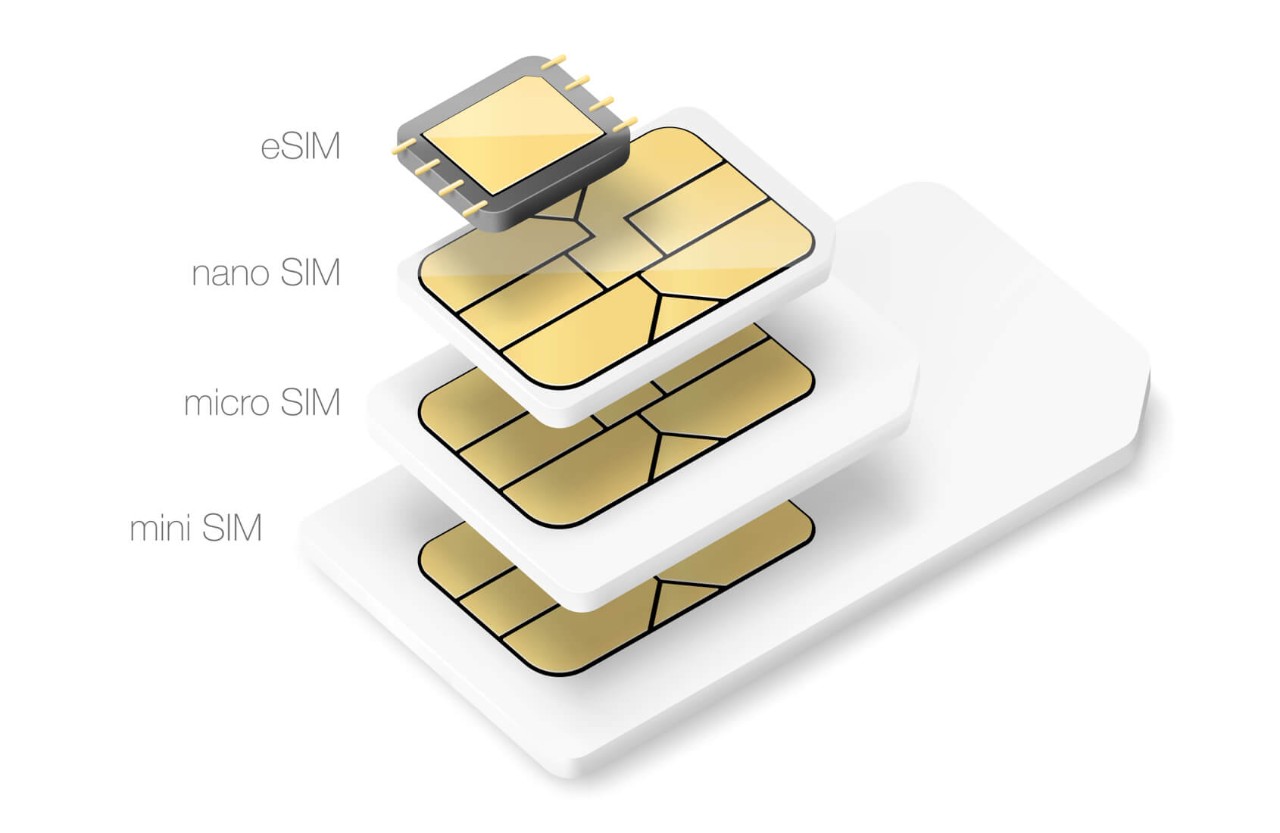Introduction
When you hold your smartphone in your hand, it's easy to overlook the tiny piece of technology that plays a crucial role in connecting you to the digital world. This unassuming piece of hardware is none other than the Subscriber Identity Module, more commonly known as the SIM card. Despite its small size, the SIM card carries a wealth of information that is essential for your device to function properly.
Understanding the SIM card and the numbers printed on it can provide valuable insights into the inner workings of your mobile device. From the unique ICCID and IMSI numbers to the PIN and PUK codes, each set of digits serves a specific purpose in ensuring seamless communication and secure access to mobile networks.
As we embark on this exploration of the numbers etched onto your SIM card, we'll unravel the significance of each code and unveil the hidden complexities that underpin the seemingly straightforward world of mobile connectivity. Let's delve into the intricate web of digits and symbols that form the backbone of your mobile communication, shedding light on the often overlooked, yet indispensable, components of modern technology.
What is a SIM Card?
A SIM card, short for Subscriber Identity Module, is a small, removable card that is inserted into mobile devices such as smartphones, tablets, and some feature phones. It serves as the link between the device and the mobile network, enabling users to make calls, send text messages, and access mobile data services. The SIM card contains crucial information that uniquely identifies the user and the mobile network to which the device is subscribed.
At its core, a SIM card is a sophisticated piece of technology that stores data essential for the device to connect to the mobile network. This data includes the International Mobile Subscriber Identity (IMSI), which is a unique identifier for the user, as well as the Integrated Circuit Card Identifier (ICCID), a distinct code that identifies the SIM card itself. Additionally, the SIM card stores security information such as the Personal Identification Number (PIN) and the Personal Unblocking Key (PUK) codes, which safeguard the user's access to the mobile network.
The physical appearance of a SIM card typically consists of a small, rectangular plastic card with a metallic chip embedded in it. This chip contains the electronic circuits that store and process the information necessary for the SIM card to function. The SIM card is designed to be easily inserted and removed from mobile devices, allowing users to transfer their mobile subscriptions between different devices.
In essence, the SIM card serves as a gateway to the mobile network, enabling seamless communication and access to mobile services. Its compact size belies its critical role in modern mobile technology, making it an indispensable component of the mobile ecosystem. Understanding the significance of the SIM card lays the foundation for comprehending the intricate web of numbers and codes that are etched onto its surface, each playing a vital role in the seamless operation of mobile devices.
Understanding the Numbers on a SIM Card
The numbers printed on a SIM card hold the key to unlocking a world of mobile connectivity and communication. Each sequence of digits serves a specific purpose, contributing to the seamless operation of mobile devices and the secure access to mobile networks. Let's delve into the significance of these numbers and unravel the intricacies that underpin the functionality of the SIM card.
The ICCID Number
The Integrated Circuit Card Identifier (ICCID) is a unique numeric code that is assigned to each SIM card. This 19 to 20-digit number is crucial for identifying the SIM card itself, differentiating it from millions of other SIM cards in use globally. The ICCID plays a pivotal role in enabling mobile network operators to track and manage SIM cards, facilitating the provision of mobile services and ensuring the security of the network.
The IMSI Number
The International Mobile Subscriber Identity (IMSI) is another essential set of numbers embedded in the SIM card. This 15-digit code uniquely identifies the user within the mobile network, allowing for seamless authentication and authorization when connecting to the network. The IMSI is instrumental in enabling mobile devices to establish communication with the network, ensuring that users can make calls, send messages, and access mobile data services without interruption.
The PIN and PUK Codes
In addition to the ICCID and IMSI numbers, the SIM card also contains security codes known as the Personal Identification Number (PIN) and the Personal Unblocking Key (PUK). The PIN is a numeric code that serves as a protective barrier, preventing unauthorized access to the SIM card and the mobile network. On the other hand, the PUK comes into play when the PIN is entered incorrectly multiple times, providing a means to unlock the SIM card and restore access to mobile services.
Understanding the significance of these numbers on a SIM card unveils the intricate layers of technology that underlie the seamless operation of mobile devices. From unique identifiers to security measures, each set of numbers plays a vital role in ensuring the reliability, security, and accessibility of mobile communication. By grasping the significance of these numbers, users gain a deeper appreciation for the intricate technology that powers their mobile devices, paving the way for a more informed and empowered mobile experience.
The ICCID Number
The Integrated Circuit Card Identifier (ICCID) is a fundamental component of every SIM card, playing a crucial role in the seamless operation of mobile devices. This unique 19 to 20-digit numeric code serves as the SIM card's distinct identity, setting it apart from the countless other SIM cards in use across the globe. The significance of the ICCID extends beyond mere identification, encompassing essential functionalities that form the backbone of mobile communication and network management.
At first glance, the ICCID may appear to be a string of random numbers etched onto the surface of the SIM card. However, its role in facilitating the provisioning and management of mobile services cannot be overstated. Mobile network operators rely on the ICCID to track and manage SIM cards, enabling them to allocate mobile subscriptions, track usage, and ensure the security of the network. This unique identifier serves as a linchpin in the intricate web of mobile network infrastructure, allowing for efficient and secure management of mobile subscriptions and services.
The ICCID also plays a pivotal role in enabling mobile devices to establish communication with the network. When a SIM card is inserted into a device, the device utilizes the ICCID to identify and authenticate the SIM card, allowing for seamless access to mobile services. This process forms the foundation of mobile communication, ensuring that users can make calls, send messages, and access mobile data without encountering authentication hurdles.
Furthermore, the ICCID holds valuable information about the SIM card, including the issuer identification number, individual account identification, and a checksum digit for verification purposes. This wealth of information encoded within the ICCID enables mobile network operators to efficiently manage SIM cards, troubleshoot issues, and provide personalized services to users.
In essence, the ICCID serves as the digital fingerprint of the SIM card, encapsulating critical information that is indispensable for the functioning of mobile devices and the seamless operation of mobile networks. By understanding the significance of the ICCID, users gain insight into the underlying infrastructure that powers their mobile connectivity, fostering a deeper appreciation for the intricate technology embedded within the unassuming SIM card.
The IMSI Number
The International Mobile Subscriber Identity (IMSI) is a pivotal element embedded within every SIM card, wielding significant influence over the seamless operation of mobile devices. Comprising a unique 15-digit numeric code, the IMSI serves as the digital identity of the user within the mobile network, playing a crucial role in enabling seamless authentication and authorization for mobile communication.
At its core, the IMSI serves as a digital passport, uniquely identifying the user and facilitating secure access to the mobile network. When a mobile device seeks to establish communication with the network, it utilizes the IMSI to authenticate the user, ensuring that the device is authorized to access mobile services. This process forms the bedrock of mobile communication, enabling users to make calls, send messages, and access mobile data without encountering authentication barriers.
The significance of the IMSI extends beyond mere identification, encompassing essential functionalities that underpin the reliability and security of mobile communication. By uniquely identifying the user, the IMSI enables mobile network operators to personalize services, track usage, and ensure the integrity of the network. This personalized identification allows for tailored mobile services, ensuring that users receive a seamless and personalized mobile experience.
Furthermore, the IMSI plays a pivotal role in enabling mobile devices to roam across different networks while maintaining seamless connectivity. When a user travels to a different region or country, the IMSI facilitates the seamless handover of mobile services, ensuring uninterrupted communication regardless of geographical boundaries. This capability underscores the global interoperability of mobile networks, allowing users to stay connected regardless of their location.
The IMSI also holds valuable information about the user's mobile subscription, including the Mobile Country Code (MCC), Mobile Network Code (MNC), and the Mobile Subscriber Identification Number (MSIN). This wealth of information encoded within the IMSI enables mobile network operators to efficiently manage user subscriptions, tailor services, and ensure the seamless operation of mobile networks.
In essence, the IMSI serves as the digital identity of the user within the mobile network, wielding profound influence over the seamless operation and security of mobile communication. By comprehending the significance of the IMSI, users gain a deeper understanding of the technology that underpins their mobile connectivity, fostering a heightened appreciation for the intricate workings of the SIM card and the mobile network.
The PIN and PUK Codes
The Personal Identification Number (PIN) and Personal Unblocking Key (PUK) codes are integral components of the security framework embedded within every SIM card, serving as the first line of defense against unauthorized access and ensuring the integrity of mobile communication. These numeric codes play a pivotal role in safeguarding the user's access to the mobile network, providing a layer of protection that is essential for maintaining the security and privacy of mobile devices.
The PIN code, typically a 4 to 8-digit numeric code, acts as a barrier against unauthorized usage of the SIM card. When a mobile device is powered on or the SIM card is inserted, the device prompts the user to enter the PIN code to authenticate and unlock access to the mobile network. This security measure prevents unauthorized individuals from using the SIM card in a different device, safeguarding the user's mobile subscription and personal information.
In the event that the PIN code is entered incorrectly multiple times, the SIM card becomes locked, rendering it inaccessible for regular usage. This is where the Personal Unblocking Key (PUK) code comes into play. The PUK code, a unique 8-digit numeric code, serves as a lifeline for restoring access to the SIM card. When the SIM card is locked due to multiple incorrect PIN entries, the user can enter the PUK code to unblock the SIM card and regain access to mobile services.
It's important to note that the PUK code should be handled with utmost care, as it holds the key to unlocking the SIM card and restoring its functionality. Upon entering the PUK code, the user can reset the PIN code and regain full access to the mobile network. This security mechanism ensures that even in the event of inadvertent lockouts, users have a means to restore access to their mobile services without compromising the security of the SIM card.
The PIN and PUK codes stand as guardians of the user's access to the mobile network, fortifying the security infrastructure of the SIM card and ensuring that only authorized individuals can utilize the mobile services associated with the SIM card. By understanding the significance of these security codes, users gain insight into the protective measures that underpin their mobile connectivity, fostering a sense of confidence and security in the usage of mobile devices.
In essence, the PIN and PUK codes form an essential layer of security within the SIM card, safeguarding the user's access to the mobile network and preserving the integrity of mobile communication. These security measures underscore the commitment to ensuring the privacy and security of mobile services, empowering users to engage in seamless and secure mobile communication without compromising on personal safety and privacy.
Conclusion
In conclusion, the seemingly innocuous numbers etched onto a SIM card hold profound significance in the realm of mobile communication and connectivity. From the unique ICCID and IMSI numbers to the protective PIN and PUK codes, each set of digits plays a pivotal role in shaping the seamless operation and security of mobile devices. By unraveling the complexities that underpin these numbers, users gain a deeper understanding of the technology that powers their mobile connectivity, fostering a heightened appreciation for the intricacies embedded within the unassuming SIM card.
The ICCID, with its distinctive numeric identity, serves as the digital fingerprint of the SIM card, facilitating network management and enabling seamless communication. Its role in tracking and managing SIM cards underscores its importance in the provisioning of mobile services and the security of the network. Similarly, the IMSI, as the unique identifier of the user within the mobile network, forms the bedrock of secure authentication and personalized mobile services. Its influence extends beyond mere identification, encompassing essential functionalities that underpin the reliability and global interoperability of mobile communication.
Furthermore, the PIN and PUK codes stand as guardians of the user's access to the mobile network, fortifying the security infrastructure of the SIM card and ensuring that only authorized individuals can utilize the mobile services associated with the SIM card. These security measures underscore the commitment to ensuring the privacy and security of mobile services, empowering users to engage in seamless and secure mobile communication without compromising on personal safety and privacy.
By comprehending the significance of these numbers, users gain a deeper insight into the technology that underpins their mobile connectivity, fostering a heightened awareness of the intricate workings of the SIM card and the mobile network. This understanding paves the way for a more informed and empowered mobile experience, allowing users to navigate the digital realm with confidence and appreciation for the sophisticated technology that powers their everyday interactions.
In essence, the numbers on a SIM card transcend their physical presence, embodying the intricate web of technology that forms the backbone of modern mobile communication. By peeling back the layers of complexity that shroud these numbers, users gain a newfound appreciation for the indispensable role they play in shaping the seamless and secure operation of mobile devices, paving the way for a more enriched and empowered mobile experience.







